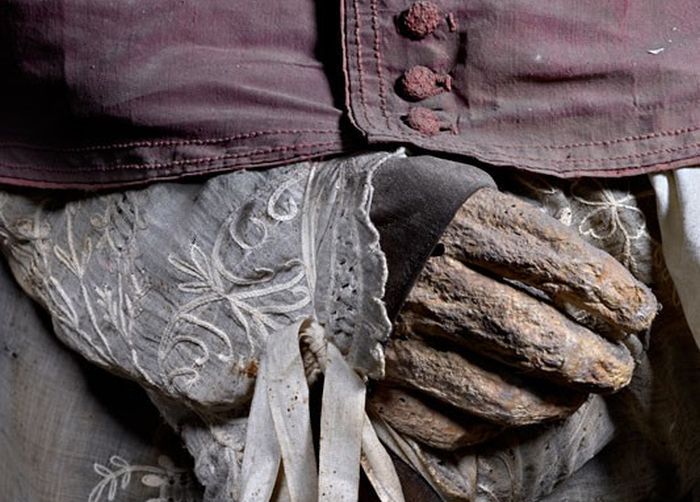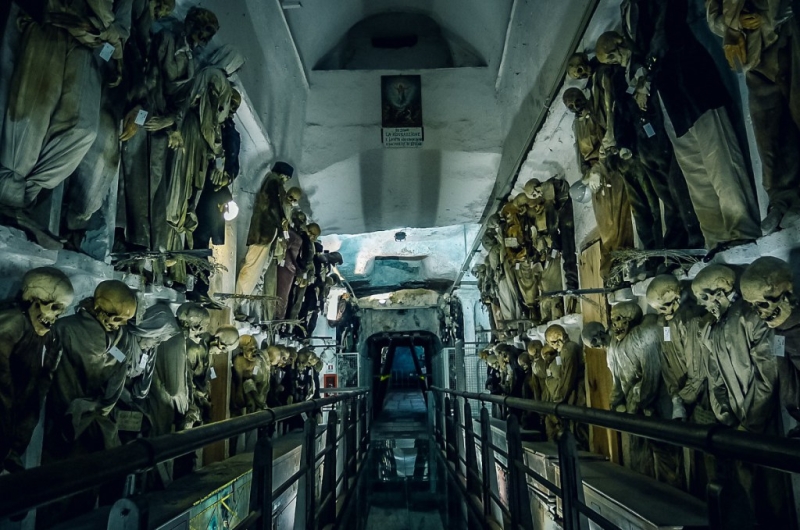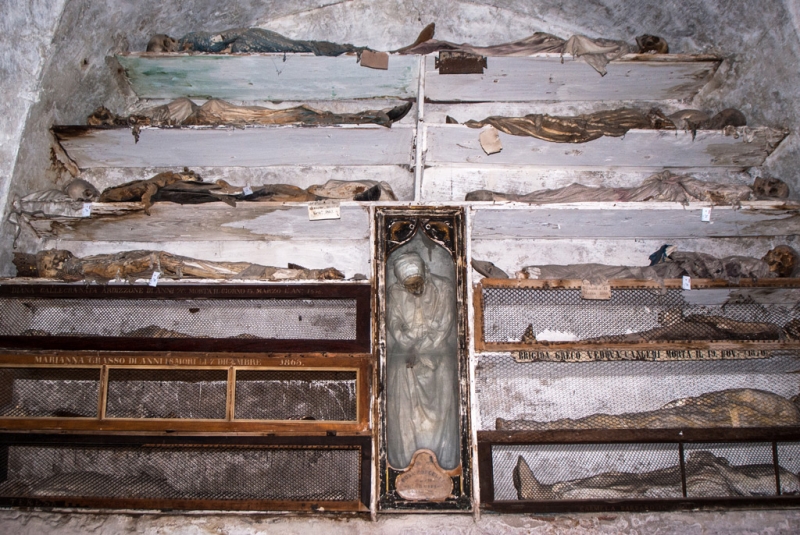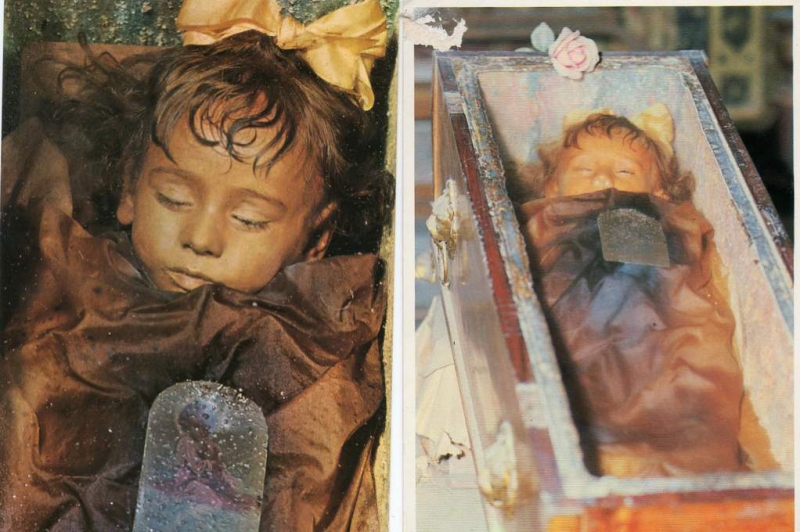
Almost the most popular museum in the Sicilian city of Palermo is the monastery cemetery. The Capuchin Catacombs, as it is called, is an eerie sight and not for the faint of heart. Funeral underground galleries in which the remains of more than 8 thousand people are buried openly (that is, without coffins) – primarily the clergy, as well as the aristocracy, rich merchants, and military leaders. The skeletal, mummified and embalmed bodies of the deceased lie, stand and hang here in niches and on shelves along the walls – this is one of the most famous and extensive exhibitions of mummies in the world. If your interest in someone else’s afterlife overpowers your fear of the dead, welcome to the underground kingdom of Hades with a tour.

The history of the Catacombs began in the 16th century, when the Capuchin monastic order settled in Sicily. Over time, the question arose about the burial place of the deceased brothers. It turned out that there was no better place than the crypt of the church at the monastery (Convento dei Cappuccini) – an underground vaulted room located under the altar. In 1599, Brother Silvestro of Gubbio was buried here, and then the remains of several previously deceased monks were transferred here. Before being placed in the Catacombs, the body was dried in a special chamber for 8 months, then washed with vinegar and dressed. As the cemetery filled with new “guests,” corridors and passages were added and lengthened. In the 18th century, it turned out that the embalming method mastered by the Capuchins, combined with the specific air of the Catacombs, did not allow bodies to decompose. When this became known to the world, benefactors and donors flocked to the monastery, expressing a desire after death to be not buried underground, but preserved here. The monks did not refuse. So the Catacombs became a prestigious cemetery for clergy, noble and bourgeois families of Palermo.

All mummies are distributed according to the status they occupied during life, professional, gender and other characteristics. For example, there is a corridor of monks (the most ancient “exhibits”),
hall of virgins, children’s hall, hall of married couples, men’s corridor. The laity are dressed in the fashion of their time: silk dresses with lace and frills and hats for the ladies and expensive suits with shirts and frills for the men. Burials were carried out until 1882. After this, an exception was made only twice. For US Vice-Consul Giovanni Patarniti in 1911 and for two-year-old Rosalia Lombardo, who died of pneumonia in 1920. The mummy of a girl, resting in a glass coffin, is considered almost the most beautiful, if this word is appropriate to use here, in the world. Her skin, hair, facial features seem to have not changed at all – Rosalia seems to be sleeping. The chapel at the monastery was renamed in honor of the girl.

The Capuchin Catacombs were mentioned more than once by famous Spanish, Italian and French writers (for example, Guy de Maupassant mentioned this place in “The Wandering Life”),
which made the museum very famous throughout Europe. However, not only tourists come here, but also those people whose ancestors are buried in the crypt under the monastery. Initially, the Catacombs could be accessed from the monastery church located above. However, in 1944, a new entrance was opened – directly from Piazza Cappuccini. The museum (site) is open year-round, 7 days a week in the summer and closed on Sundays from October to March. Photography is prohibited.

